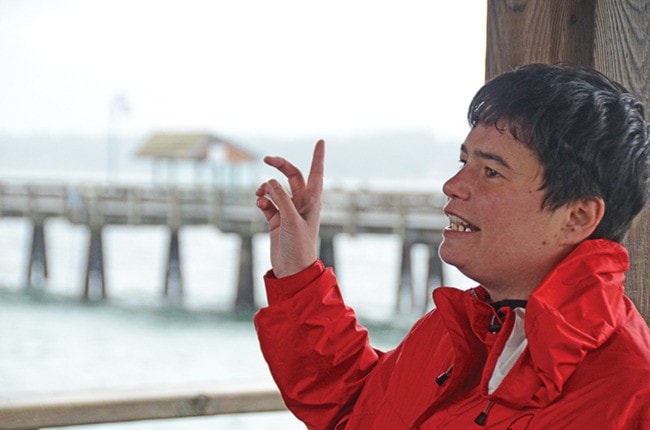Ocean Networks Canada (ONC) – a research facility based out of the University of Victoria – came to town Friday to announce its newest project.
ONC operates many oceanography research initiatives all over the coast of Canada, including an 800 km long system of deep sea fibre optic cables and monitoring equipment off the west coast of Vancouver Island.
“We’re trying to ensure that people in communities can make the most use possible of the instruments that we install locally and offshore,” said Associate Director of User Services at ONC, Maia Hoeberechts, to those gathered at the Explorer Lab at the Maritime Heritage Museum Friday. “We’re trying to promote the use of ocean technology for monitoring so that people can make their own decisions about their environment.”
To that end, they are installing the first of their new Smart Ocean Systems Community Observatories – other than the “proof of concept” test sites in Mill Bay and Cambridge Bay in Nunuvut – in Campbell River, off the end of the Discovery Pier.
“We scaled down the technology that’s used in our deep sea observatories, and we adapted it for coastal installations,” Hoeberechts says. “It’s part of a program called Smart Oceans. The idea, in its most general terms, is to put sensors in the ocean so we can make smart decisions about local management of resources and the local use of the ocean.”
In layman’s terms, they’re attaching the ocean to the Internet.
Part of what makes the program truly innovative, Hoeberechts says, is that the data is gathered and made immediately available – not only to researchers, but also the general public – in real time.
“Given the right tools and easy accessibility, scientific information coming from the ocean could be used by everyone in the community,” she says. “From students to councillors to fishers, the community observatory can help them ground their decisions about their coastal and marine resources in science — or simply to better understand the ocean at their doorstep.”
In December, ONC installed the shore-based components of the observatory – antennae and communication equipment for transferring the data, and an above water weather station, for example – and later this week, assuming the weather cooperates, will be the installation of the seafloor platform outfitted with the rest of the monitoring equipment.
That equipment includes a live-streaming video camera, a hydrophone to record the sounds of ships and sea life such as the pods of whales that travel by periodically along with other devices to record water properties such as temperature, salinity, oxygen and chlorophyl levels – the basic readings scientists are interested in knowing.
Then, at the Cape Mudge Lighthouse, another installation will be performed, consisting of a radar system which will monitor the surface of the water to gather surface current data.
Their original intent was to actually launch the Campbell River Observatory on Friday, but due to weather conditions, they had to push it back.
Hoeberechts says they’ve learned to be flexible like that, though. When you study nature, you have to let it do the talking.
They’ll be back up this way as soon as possible to get the platform in the water and get it online, however, at which point anyone with an Internet connection will be able to see, in real time, what’s happening along our shore.
Check out their current data gathering and installations at oceannetworks.ca/installations and follow along with them on Facebook (OceanNetworksCanada) and Twitter (@ocean_networks) to watch for updates on the launch of the new platform.
